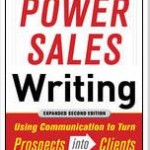Reader challenge: Your favorite tool for investment commentary?
Investment commentary is a key component of client communications for many asset managers and financial advisors. Having the right tools can make your life easier, so let’s share information about them.
Share your favorite tool below
What’s YOUR favorite tool for creating commentary? Please share your top choice in the comments section below.
Any kind of tool is fine. For example: writing book, commentary template, data source, investment strategist, website, data source, software, or company.
My favorite tool is mind mapping because it helps me organize the information I collect from interviews when I ghostwrite investment commentary. I use mind maps to find and organize the most important information.
I’m looking forward to learning about YOUR favorite tools.





My “tool” is to spend a lot of time reading up on the conventional wisdom that is already out there, then develop a theme that is contrary to the CW on a key point or two. That way, I’m offering a point of view which distingushes my commentary and provides something unique for my audience to latch on to.
Dick Purcell told me he had trouble posting a comment, so I’m posting the contents of his email to me.
—————————
My comment was just one word: “GRAPHS!”
For website entrybox, to illustrate my comment I entered the link for my sample interactive-graphs page:
http://www.dickpurcell.com/new-course/7-testing/
I really think that if (a) the graphs are focused on result probabilities for $ goals, and (b) user can change either plans or assumptions and see the effects, these graphs are educate-inform-communicate magic. (Maybe I shoulda said that in my comment?)
Dick
Thank you, David and Dick!
David, I agree that unconventional thinking helps commentary stand out.
Even though I’m a word nerd, I find that a good graph can make commentary pop, as Dick suggests.
One of my LinkedIn connections just suggested TheBrain (http://www.thebrain.com/products/thebrain/thebrain-7/)as his favorite tool.